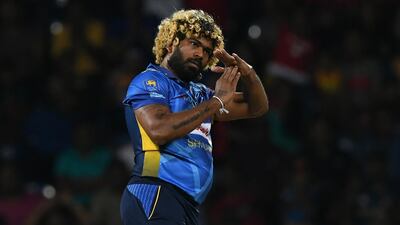A month into the inaugural season of Video Review Assistants in the Premier League, discussions are already well underway about how to improve the system.
Aside from the arguments about what constitutes a "clear and obvious" error for VAR to intervene , or, for the footballing purist, whether the system is needed at all, there is one topic that keeps rearing its head: should there be a challenge system in place for players and managers?
Sports such as cricket, tennis, NFL and hockey have all successfully introduced referrals into their review systems, where each team – or player, in tennis terms – are given a set number of challenges to a decision where they can ask for an incident to be checked by the eye in the sky.
In Test cricket, for example, a team captain has two chances per innings to review a decision made by on-field umpires. If the decision is successfully overturned by a third umpire using video technology, the team keeps the referral. Get it wrong and they lose it.
Successfully calling out the right incidents to refer has become a vital weapon. To put it bluntly, waste your referrals and you can lose the match. Just ask Tim Paine.
During the recent third Ashes Test against England at Headingley, the Australian captain wasted all four of his challenges in the match on bad calls.
With the pressure on as the match headed for its epic conclusion, a rampant Ben Stokes needed just two to seal a record run chase. Australia spinner Nathan Lyon – and every Australian in the ground – felt he had the England all-rounder plumb lbw. Umpire Joel Wilson did not agree. Hawk-Eye, cricket's ball-tracking technology, showed the ball crashing into the stumps. The decision could not be challenged as Paine had thrown away both referrals. Stokes steered England to a thrilling one-wicket victory.
The Ashes would have been already in the bag for Australia, one Test before the little urn was safely secured two weeks later in Manchester.
Australia coach Justin Langer admitted his team had panicked under pressure and used their challenges badly. "We've been really poor at it this series," he said after the match. “We’ve talked a lot about getting better at our reviews. Certainly, we have control of that."
The process has become a crucial and accepted part of the game in cricket – and in other sports such as tennis, where ball-tracking has wiped out the problem of bad line-calls.
But how would this work in the Premier League? A crucial factor on the implementation of VAR is that the fast and furious nature of English football was not constantly interrupted by video reviews.

The feeling is pretty unanimous between players, managers, officials and fans. But, used correctly, referrals could be a useful addition to the system.
Players diving – or being accused of simulation, to give it its official term – is now one of football's big issues and a constant source of frustration for many.
Now imagine two referrals are in place for each team to use, with the same rules as cricket: get the referral wrong and you lose it.
Imagine a player has committed a sneaky dive to win a free kick that is not given by the on-field referee. The player demands his captain challenges the call; VAR looks at the incident, stands by the decision and that team loses a referral. All eyes turn to the player who simulated and cost his team a referral. He will then surely think twice before diving – never mind crying wolf afterwards.
One sticking point, though, is the very nature of football. Cricket, tennis and American football are all stop-start in nature. Challenges are easily slotted into the fabric of the action, doing so in football would be more problematic.
How long would you give a team before deciding on a referral? Should it be the team manager or captain who decides? Does the game need to be stopped so a discussion takes place with a player about whether a foul has taken place? Is this not adding another disruption to the flow of the Beautiful Game?
The latter is a fair concern. But by limiting the number of challenges, those disruptions should be minimal – as long as the on-field referee is not having a nightmare and making mistake after mistake.
And if that is the case, then the system is doing its job: wrong decisions are being overturned and bad referees will soon be weeded out.
In short, as the Premier League looks to improve and fine-tune VAR , a referral system seems to be the next logical step.

